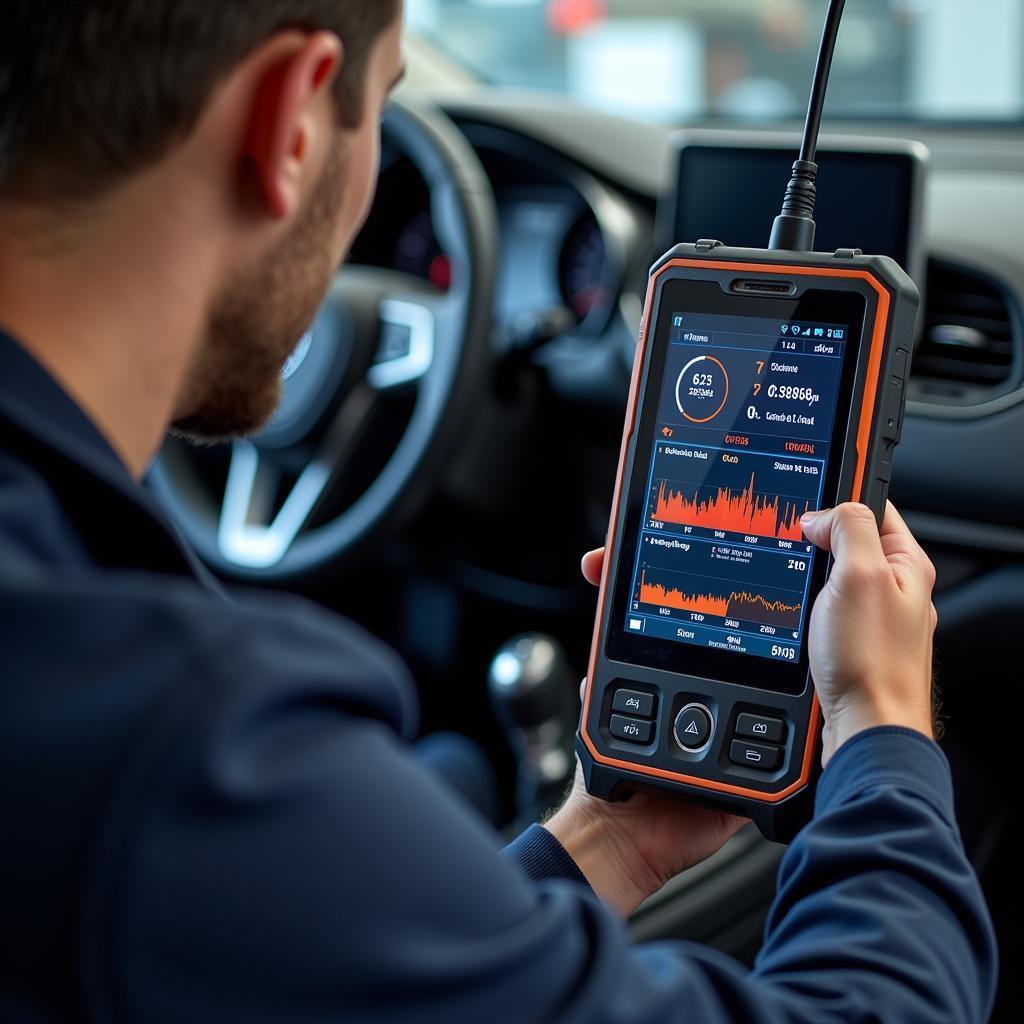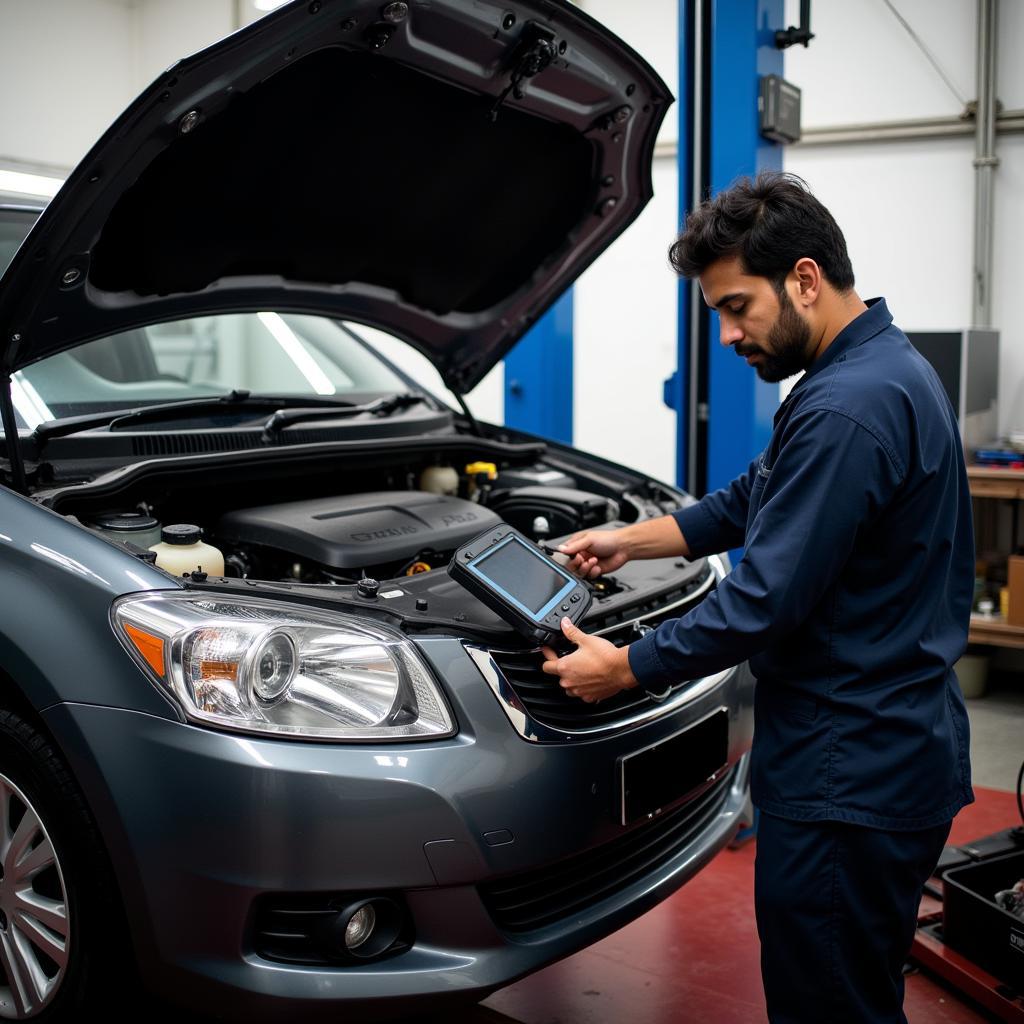A bad ground in your car battery can lead to a host of frustrating electrical problems, from dim headlights to a car that won’t start. Understanding how to diagnose and fix this issue can save you time and money. This article will guide you through the process of troubleshooting and fixing a bad ground in your car battery, equipping you with the knowledge to tackle this common car problem.
Why is a Good Ground So Important?
Your car’s electrical system relies on a complete circuit for power to flow. The negative terminal of your battery is connected to the car’s chassis, creating the ground. This ground path allows electricity to return to the battery after powering various components. A poor connection in this ground path restricts current flow, leading to malfunctions.
Signs of a Bad Ground in Car Battery
Several symptoms can indicate a bad ground. These range from minor annoyances to major issues:
- Dim or flickering headlights, especially when other electrical components are running
- Slow or erratic power window operation
- Starting problems or clicking noises when turning the key
- Malfunctioning dashboard gauges or lights
- Intermittent electrical issues that are difficult to diagnose
- Strange smells, like burning plastic, due to overheating wires
- Audio system problems, such as static or distorted sound
How to Fix Bad Ground in Car Battery: A Step-by-Step Guide
Follow these steps to diagnose and fix a bad ground:
- Safety First: Disconnect the negative battery cable before working on any electrical components. This prevents accidental shorts and potential injuries.
- Locate the Ground Cable: The main ground cable usually connects the negative battery terminal to the engine block or chassis. Look for a thick black cable attached to a bolt.
- Inspect the Connections: Check both ends of the ground cable for corrosion, loose connections, or damage. Corrosion appears as a white, powdery substance.
- Clean the Connections: Use a wire brush or sandpaper to remove any corrosion from the battery terminal, cable connector, and the grounding point on the engine/chassis.
- Tighten the Connections: Ensure the ground cable is securely bolted to both the battery terminal and the grounding point. Use a wrench to tighten the bolts.
- Check Other Ground Connections: Your car has other ground connections for various components. Inspect these connections for similar issues and clean/tighten as needed.
- Test the Repair: Reconnect the negative battery cable and test the electrical components that were previously malfunctioning.
Troubleshooting Persistent Ground Problems
If the problem persists, consider these additional steps:
- Check the Battery: A failing battery can sometimes mimic grounding issues. Have your battery tested to rule out this possibility.
- Inspect Ground Straps: Ground straps connect various parts of the engine and chassis. A faulty strap can cause ground loops and electrical interference.
- Use a Multimeter: A multimeter can help pinpoint the location of a bad ground. Consult a repair manual for specific testing procedures.
How to Prevent Future Ground Problems
Prevention is always better than cure. Follow these tips to prevent future grounding issues:
- Regularly inspect and clean battery terminals and ground connections.
- Apply dielectric grease to the terminals after cleaning to prevent corrosion.
- Ensure all ground cables and straps are securely fastened.
Expert Insights
John Smith, a seasoned automotive electrician with over 20 years of experience, emphasizes the importance of regular maintenance: “A simple cleaning of your battery terminals and ground connections can prevent a multitude of electrical problems down the road.”
Another expert, Maria Garcia, a specialist in automotive electrical systems, adds, “Don’t underestimate the impact of a bad ground. It can affect everything from your headlights to your engine’s performance.”
Conclusion
Fixing a bad ground in your car battery is often a straightforward process that can save you from costly repairs. By understanding the signs, following the steps outlined in this guide, and implementing preventative measures, you can keep your car’s electrical system running smoothly. If you continue to experience issues, don’t hesitate to contact AutoTipPro at +1 (641) 206-8880 or visit our office at 500 N St Mary’s St, San Antonio, TX 78205, United States for expert assistance. We’re here to help you get back on the road.







Leave a Reply